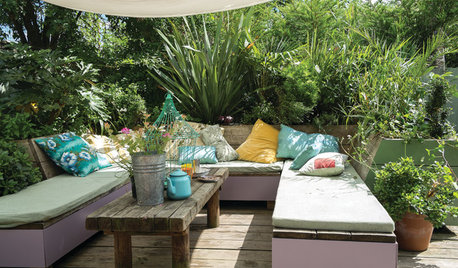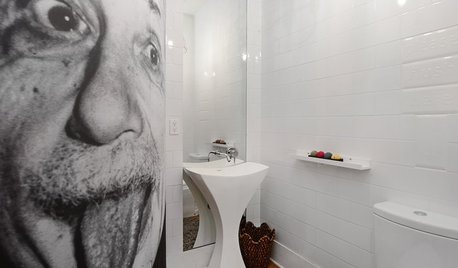I wanted to post this for anyone who has battled the scourge that is bermuda grass. I've been fighting with it now for quite a number of years and have not used a single synthetic herbicide. Below is my story of using multiple different methods of organic control. Feel free to add your stories.
I live on heavy clay soil and the bermuda grass is heaviest over the leach fields of our septic system. Because I can't plant anything but grass on the fields, I added lots of planting beds near and around the fields where the bermuda is the thickest, but didn't know how much of a pain that was going to be. So, to say the least, I've been whacking at the bermuda for years and learned the following:
Digging it up is an almost useless undertaking mainly because of our thick clay soil. There's always enough missed that the stuff comes back fairly quickly. This is especially true if digging it up near a sidewalk or driveway. There is plenty of rhizomes under the pavement.
Burning the stuff with a propane torch is fun at first but grows old quickly when you start seeing new green growth the following day (or even hours later. . .that will drive you crazy). I also can't do extended burning sessions to try to roast the rhizomes because I'm usually doing a remedial removal with good plants near the bermuda. I'm lucky enough to not burn the plants I want.
Boiling water held promise when I tried it despite risking killing roots of my wanted plants. Though my first attempt at this was incredibly dangerous (super propane burner under a giant stainless pot filled with boiling water and a smaller pot to scoop and pour the water out). I saw definite slowing of the regrowth but I couldn't risk doing it the way I was. So I devised a plan to turn my propane torch into a continuous hot water flame thrower by getting thin copper tubing, turning it into a coil, and attaching it to the end of the torch. With the hose attached to the other end and a valve to adjust the water volume, I was able to torch and pour boiling water on the bermuda at the same time. Unfortunately, the bermuda just kinda laughed at the rig and kept growing.
Industrial strength vinegar (ie, 20% acetic acid, and yes I know that stuff is quite dangerous) works wonders to kill the top growth, but sadly it just grows back.
Now if you're putting in a new bed, thick paper or cardboard under the added soil or mulch will work, but only if timed correctly, more about that to follow.
So what's left that an organic gardener has to kill this grass? The final thing in my arsenal is black plastic and not clear plastic. I've tried the clear in another area, albeit it didn't have bermuda in it, but it did have johnson grass and it loved the clear. The johnson grass just kept on growing.
The black plastic I've used is the stuff meant to go in crawl spaces as the moisture barrier. It's thick, heavy, and comes in really large sizes. And it withstands the elements very well. I've used one piece now for a year and it doesn't show any UV damage that most plastics would show. And I get to keep reusing it as I put new beds in.
Now there's a trick with using the black plastic. You have to time it right. If you want to kill the bermuda, do not put it down in the early spring to take it up in early summer or late summer for late fall removal. Because bermuda goes dormant where I live, the spring time use of the plastic will not really kill it as it is probably still dormant under the plastic.
But, the interesting part is the fall timing. As cooler temps approach in late summer, the bermuda starts going dormant even though it is still green. It starts storing more in its roots. So, even if you smother it then, it will come back in the spring. I learned this dearly when using the thick paper method of killing the stuff for a new bed. The paper did its job to kill the bermuda for that year, but in the following spring when the paper degraded in the soil, the bermuda came back with a vengeance.
So time laying the plastic out in the early summer to at least late summer. That should ensure total removal. Of course, if you're paranoid, like me at times, leave it longer.
Now, there's another problem with thick, black plastic. You really can't use it in already established beds because it will choke out your good plants and probably wreak havoc with your soil. It works wonders for killing this stuff before establishing new beds and for areas without plantings like walk paths.
But what do you do with established plantings? This year I got a new weapon. Woven black plastic: http://www.groworganic.com/sunbelt-weed-fabric-3-x-50-roll.html
The stuff lets air and moisture to pass through while keeping a total blackout for the soil surface. I haven't yet tried it on my bermuda as it is still dormant-ish, but I have some ready at first signs. It looks extremely promising as the material is thick and just as light blocking as the black plastic for a crawl space moisture barrier. And it should work just fine around my already established plantings.









menk
Tiffany, purpleinopp Z8b Opp, AL
Related Discussions
orchard full of bermuda grass
Q
Organic way to get rid of Bermuda grass
Q
Bermuda Grass Problem
Q
Extreme Allergy Alert: Bermuda Grass Pollen
Q
Tiffany, purpleinopp Z8b Opp, AL